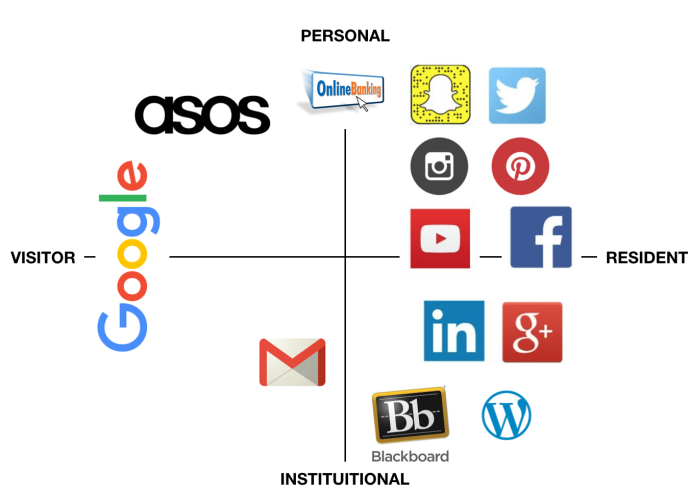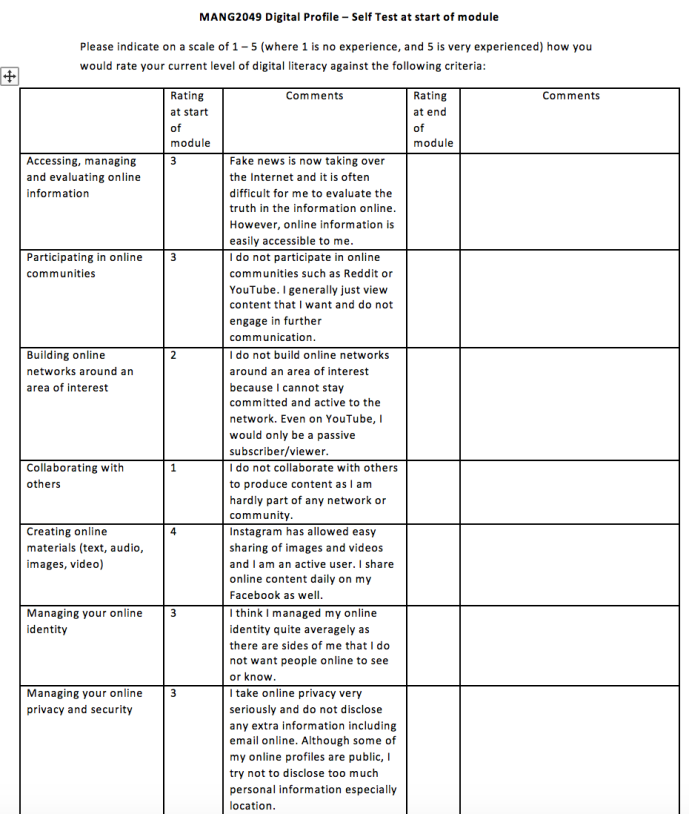A huge advantage of single digital identity framework could support transactions across a range of industries, from healthcare to e-commerce as per my comment on Gary’s post. However, are you convinced to having just one single identity?
In a digital world full of virtual personas, authenticity is quickly becoming an endangered quality. – Steve Tobak, 2016
Being fake online is easier than being real because you are able to project your own expectations and desires without any worry of being judged. Unfortunately, they’re jumping on the “fake it ‘til you make it” hype parade en masse.
I do agree with Darren, when he mentioned that during communication with different people, different tones and self censorship was used and if this happens in real life, it could too for online. The photo of me hanging at a club does not need to be the subject of the conversation I am having with my mom.
Here’s how the same content is shared over different social sites.

Source: AddThis
Reading through Siewmin’s post, she shared that creating multiple profiles might not be necessary as Facebook privacy settings allow user to decide which audience could see your post. This is interesting to know because despite that, people are still not convinced that having personal and professional account linked together is a good choice. For example, Chicago-based writer Jerry Brennan has three Facebook profiles – one as himself, one for his pen name and another alias used for research based. According to Experian Research, a typical person in the UK has an estimated total of 26 online accounts (2017).
Our research has shown that people across the generations have very different attitudes towards the way they navigate the internet and manage their online accounts, or online IDs – Nick Mothershaw
Can we still believe who we are online? Maybe my online friend Lucas, is not Lucas after all. This is an interesting video done by Ditch The Label about social media lie versus reality.
Source: Ditch The Label
After three topics, I have learnt much more about digital literacy and I can now safely present my digital profile – before and after:

Infographics created by me.
(317 words)
Here’s a song that sums up today’s topic:
Comments:
Sources:
AddThis (addthis). (2017). Pinterest. Retrieved from https://www.pinterest.com/addthis/
Are You Living an Insta Lie? Social Media Vs. Reality. (2017). YouTube. Retrieved from https://www.youtube.com/watch?v=0EFHbruKEmw
Eler, A. (2012). Why People Have Fake Facebook Profiles – ReadWrite. ReadWrite. Retrieved from https://readwrite.com/2012/01/23/why_people_have_fake_facebook_profiles/
darlieontheweb, V. (2017). The more the merrier?. Darren Chua. Retrieved from https://darlieontheweb.wordpress.com/2017/11/20/the-more-the-merrier/
Tobak, S, (2016) If You Want to Be a Real Leader, Quit Being Fake. Fortune. Retrieved from http://fortune.com/2016/04/29/quit-being-fake/
UK’s online identity habits revealed: Have we reached peak password?. (2017). Experian plc. Retrieved from https://www.experianplc.com/media/news/2017/uk-s-online-identity-habits-revealed-have-we-reached-peak-password/



You must be logged in to post a comment.